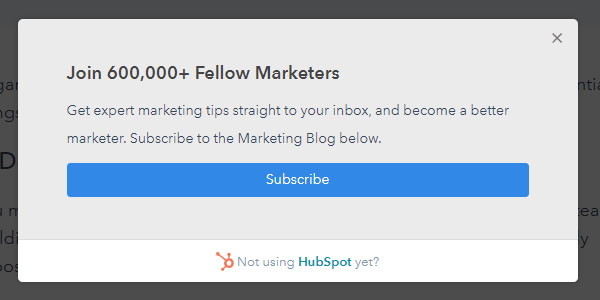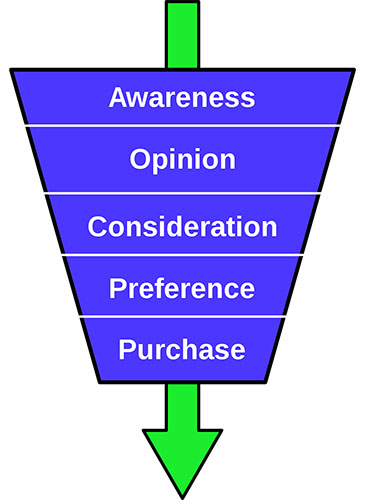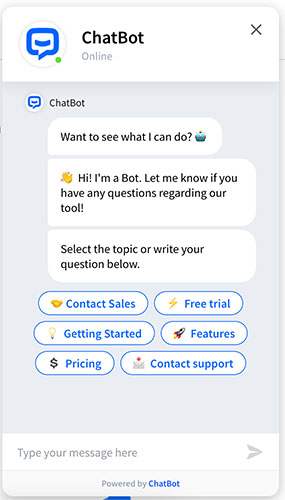Setting up a website for your business is a great first step to growing your online presence, building trust, and promoting your brand. The next key milestone is to make some money! In this article, we look at some different tactics you can use to capture interest from potential customers online.
Exit intent and crafted offers
If you’ve not heard of exit intent, it’s a method of showing website visitors a pop-up message when they are about to leave or exit. This is achieved through some code or a software plugin that triggers the message when their mouse pointer leaves the internet browser window.
An exit offer could be a discount code, a piece of content, or anything that is intended to make the visitor do something before they leave. The most common action is asking them to supply their email address.

Exit-intent is a contentious issue for marketers. Unfortunately, on many websites, it’s abused. It’s not uncommon to see multiple layers of them on certain websites, which bombard you when you leave.
Used sparingly though, exit-intent offers can be helpful for your audience. For example, if you run an e-commerce site and someone is adding goods to their basket, if they go to leave, you could offer them a voucher for 10% off or free shipping. This simple gesture could be the difference between losing or closing the sale.
Further reading:
- Crazy Egg – How to Create an Effective Exit Pop-up and Get More Conversations
- Campaign Monitor – Exit Intent: How Does It Work?
Dedicated landing pages and lead magnets
The purpose of a landing page and lead magnet is straightforward; attract people to your product or service with an offer or helpful information in return for a sale or some details about them.
Using the example of selling a product, a landing page allows you to focus on key features and benefits. This then gives the person viewing the page a better understanding of what it is, how it works, and hopefully, why they need it!
Ultimately, you’re looking to convert the visitor into a paying customer, or at least move them further down the marketing funnel. This could involve collecting their details in return for an e-book or other piece of content to help them with their decision.

Landing pages should be about providing value, but also controlling distraction. Your website may have a number of pages that will provide visitors with a wealth of information, but it will also have distractions like a navigation bar, perhaps videos, and all sorts of other things that could send visitors in numerous directions. When designing your landing page, you can dial down the distraction. This then helps focus attention on the page content and allows you to showcase your product or service in more detail.
Further reading:
- Wordstream – 21 Great Landing Page Examples (+ How To Make Your Own!)
- HubSpot – 19 of the Best Landing Page Design Examples You Need to See in 2021
Chatbots and conversational marketing
Visit most websites today and you’ll be greeted with a live chat pop-up in the bottom corner of your browser. What was once reserved for live support has now become a key part of the buying process.
People are very used to chatting via instant messaging, like on social media. Typing and having a two-way conversation is, therefore, second nature. That’s what makes live chat software such a powerful tool for marketers.
There are plenty of solutions on the market to add live chat to your website. Some offer standard two-way chat. Others are more sophisticated and offer a bot feature, whereby you can program responses based on what a user types. Others have a mixture of the two to create a true 24/7 experience.

Adding chat to your website is a great way to learn more about how people use it. You can get a feel for busy periods on your website, and of course, have some conversations! Being able to answer questions at the moment, whilst the visitor is active on your website, can produce some really great results compared to filling out a traditional contact form and waiting for your reply. Obviously, you need to be supervising the chat, but it’s worth experimenting.
Further reading:
- WP Forms – The Ultimate Guide to Conversational Marketing (+Examples)
- Drift – The Official Book on Conversational Marketing
Conclusion
When thinking about lead capture, it’s important to remember that buyers hold all the power when it comes to purchasing. They’ll often conduct lots of research on their own, gathering information to reach a decision. If you, as the seller, can be there to answer questions and provide helpful information along the way, you’re in a great position to be there when they’re ready to buy.
What lead capture methods work best for you? Let us know on Twitter, Facebook or LinkedIn.


